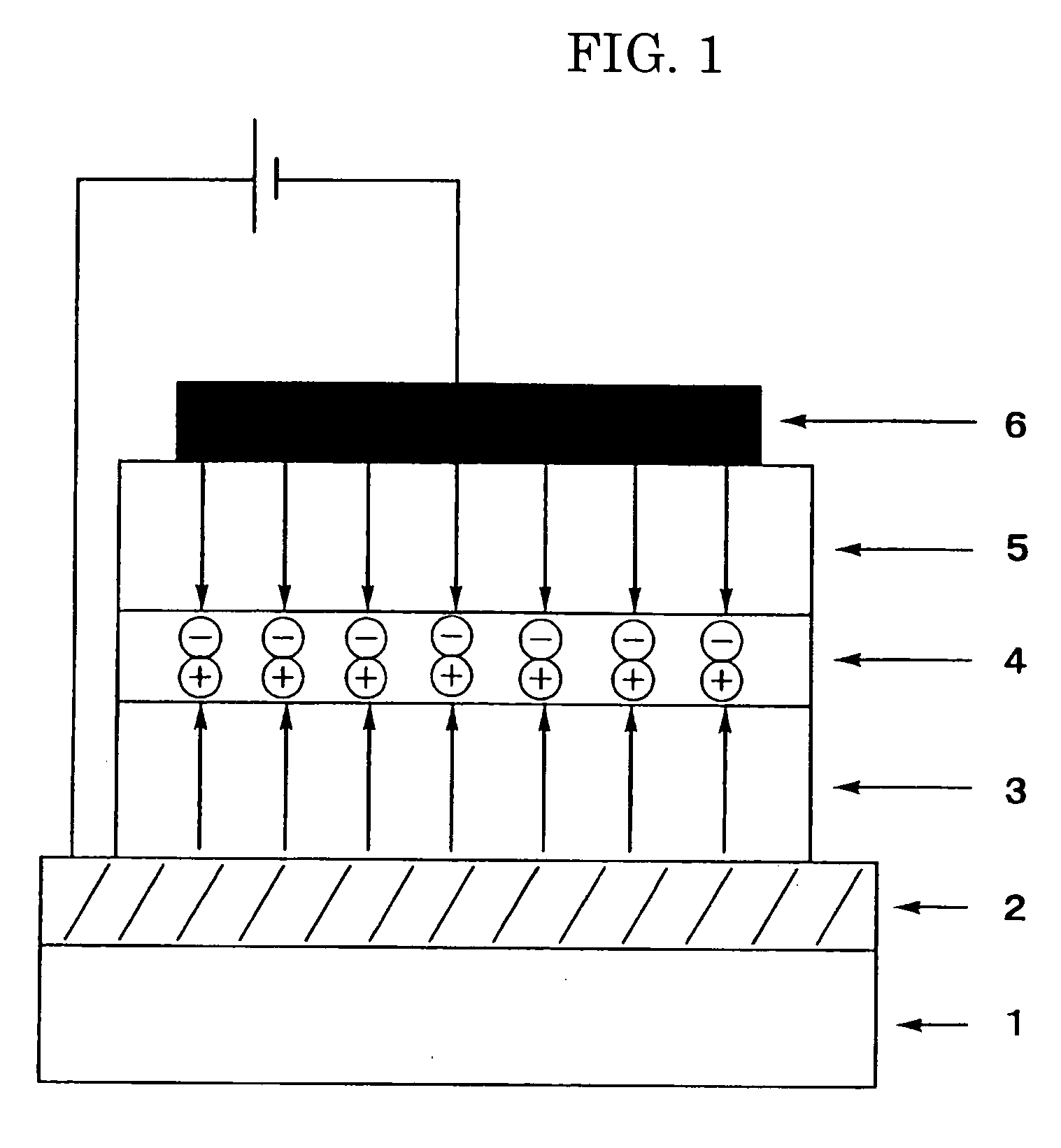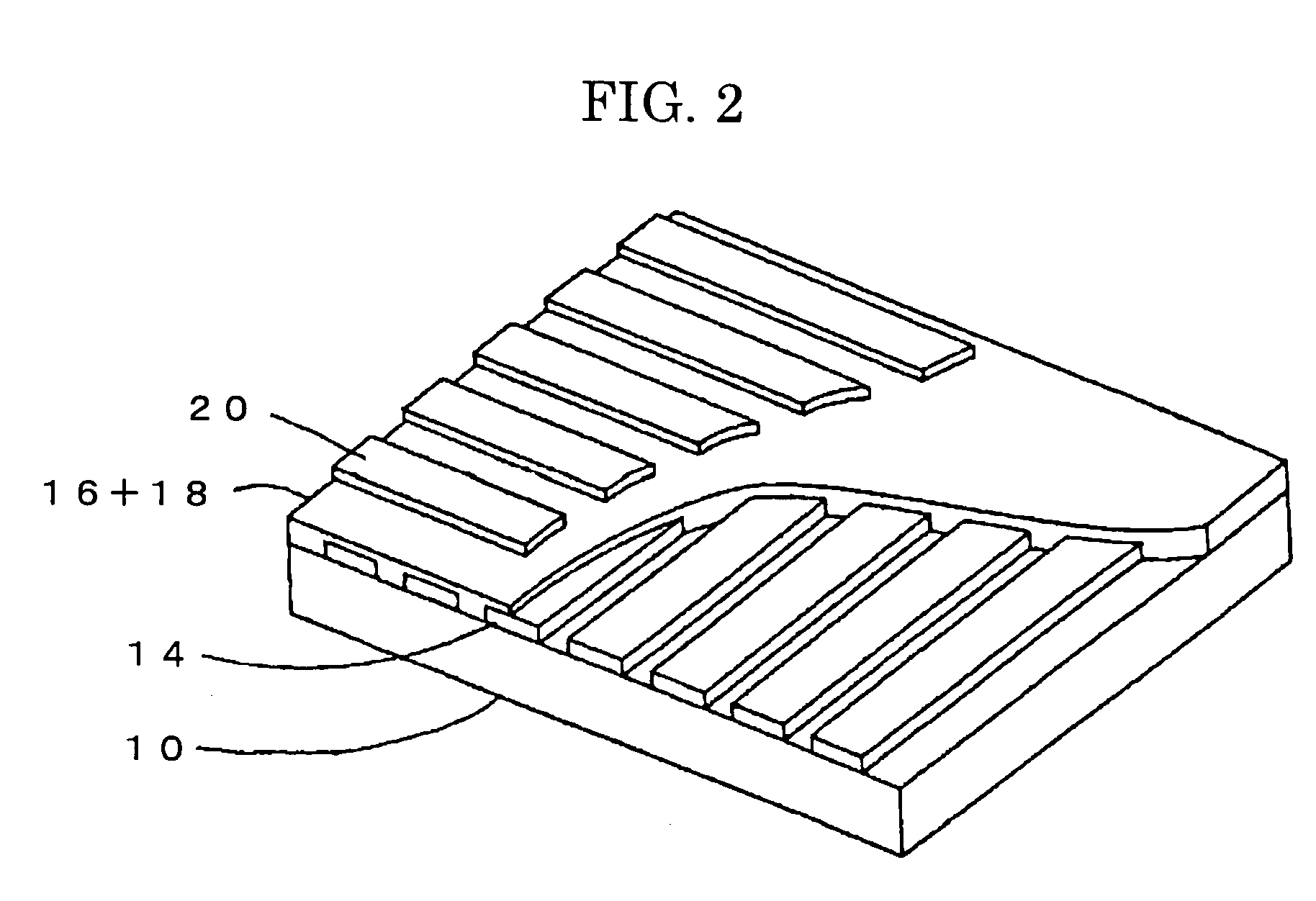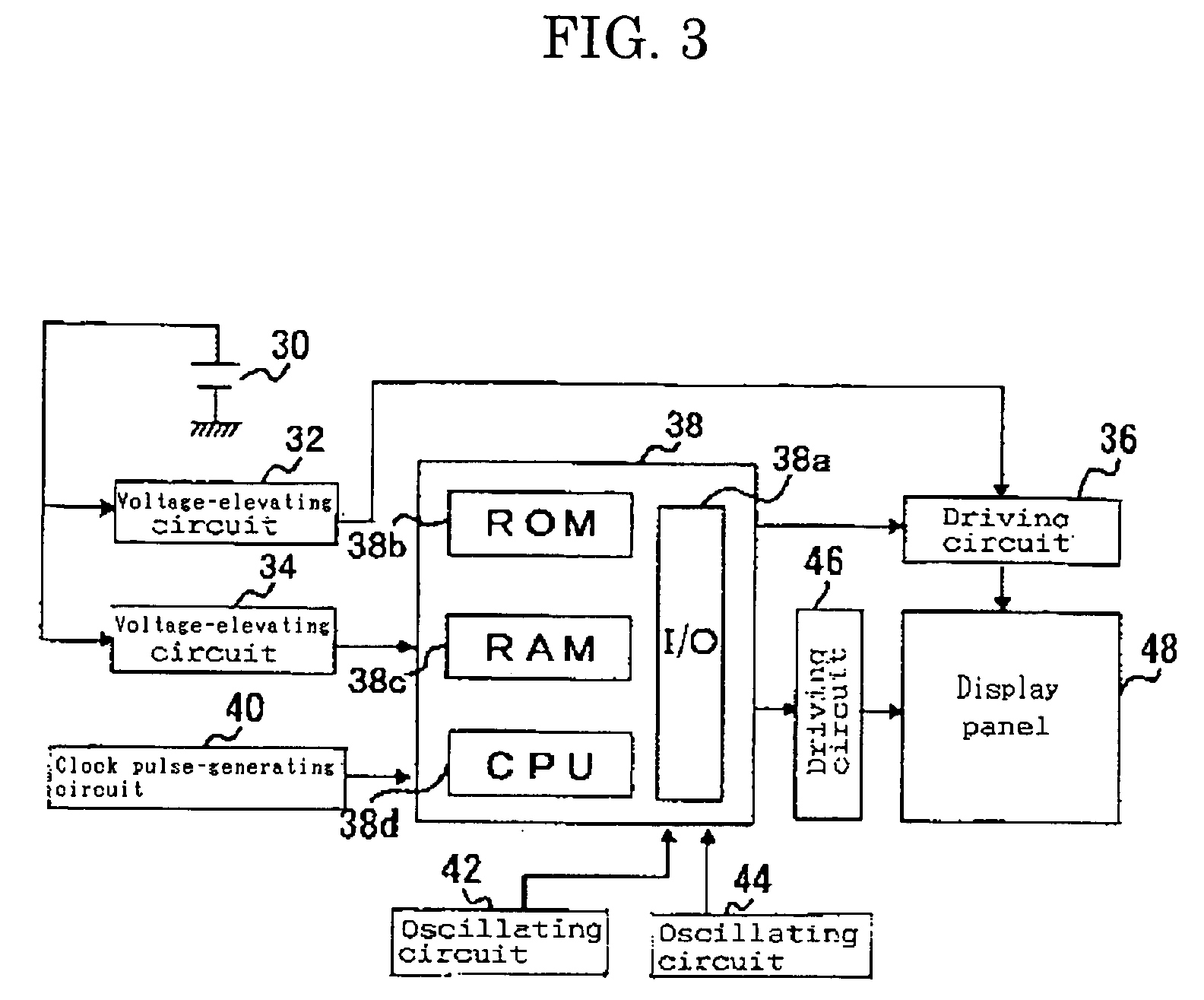Amine compound and uses thereof
a technology of amine compound and amine, applied in the field of new materials, can solve the problems of not being able to receive clear information, unsuitable for portable equipment, and power consumption that is not so low, and achieve the effects of efficient absorption of visible light, stable membrane, and large thermal stability
- Summary
- Abstract
- Description
- Claims
- Application Information
AI Technical Summary
Benefits of technology
Problems solved by technology
Method used
Image
Examples
example 1
Amine Compound
[0051] 50 ml of toluene were placed in a reaction vessel, admixed with 2.50 g of N,N′-diphenylbenzidine, 6.86 g of the coumarin compound represented by Chemical Formula 51, 0.17 g of palladium acetate, 2.0 g of potassium tert-butoxide, and 0.36 ml of tri-tert-butylphosphine, and reacted for four hours under reflux conditions. The reaction mixture was cooled, and purified on column chromatography using chloroform / ethyl acetate as eluent, thus obtaining 3.20 g of the amine compound of this invention represented by Chemical Formula 29 in a yellow powdery crystal form.
[0052] A part of the crystals was sampled, and its visible absorption and fluorescence emission spectra were determined in methylene chloride solution in usual manner, leading to the observation of absorption and fluorescence maxima at wavelengths around 427 (ε=9.18×104) and 512 nm, respectively. The amine compound of this Example showed a melting point around 368° C., glass transition point around 204° C...
example 2
Amine Compound
[0054] 4-Methoxyaniline and the compound represented by Chemical Formula 52, in place of N,N′-diphenylbenzidine and the compound represented by Chemical Formula 51 respectively, were allowed to react similarly as in Example 1, thus obtaining the amine compound represented by Chemical Formula 2 in a yellow powdery crystal form.
[0055] A part of the crystals was sampled, and its visible absorption and fluorescence emission spectra were determined in methylene chloride solution in usual manner, leading to the observation of absorption and fluorescence maxima at wavelengths around 415 (ε=4.06×104) and 562 nm, respectively. The amine compound of this Example showed a melting point around 305° C., glass transition point around 141° C., and decomposition point around 487° C. when determined by usual DSC analysis. The 1H-NMR spectrum in chloroform deuteride showed peaks at chemical shifts δ (ppm, TMS) of 3.78 (3H, s), 6.78 to 6.83 (4H, m), 7.22 to 7.27 (4H, m), 7.50 to 7.61...
example 3
Amine Compound
[0057] Aniline and the compound represented by Chemical Formula 52, in place of N,N′-diphenylbenzidine and the compound represented by Chemical Formula 51 respectively, were allowed to react similarly as in Example 1, thus obtaining the amine compound represented by Chemical Formula 3 in a yellow powdery crystal form.
[0058] A part of the crystals was sampled, and its visible absorption and fluorescence emission spectra were determined in methylene chloride solution in usual manner, leading to the observation of absorption and fluorescence maxima at wavelengths around 417 (ε=4.10×104) and 563 nm, respectively. The amine compound of this Example showed a melting point around 358° C., glass transition point around 153° C., and decomposition point around 495° C. when determined by usual DSC analysis. The 1H-NMR spectrum in chloroform deuteride solution showed peaks at chemical shifts δ (ppm, TMS) of 7.14 (2H, t), 7.24 to 7.37 (6H, m), 7.50 to 7.61 (4H, m), 7.68 to 7.77 ...
PUM
| Property | Measurement | Unit |
|---|---|---|
| wavelength | aaaaa | aaaaa |
| wavelength | aaaaa | aaaaa |
| glass transition point | aaaaa | aaaaa |
Abstract
Description
Claims
Application Information
 Login to View More
Login to View More - R&D
- Intellectual Property
- Life Sciences
- Materials
- Tech Scout
- Unparalleled Data Quality
- Higher Quality Content
- 60% Fewer Hallucinations
Browse by: Latest US Patents, China's latest patents, Technical Efficacy Thesaurus, Application Domain, Technology Topic, Popular Technical Reports.
© 2025 PatSnap. All rights reserved.Legal|Privacy policy|Modern Slavery Act Transparency Statement|Sitemap|About US| Contact US: help@patsnap.com



